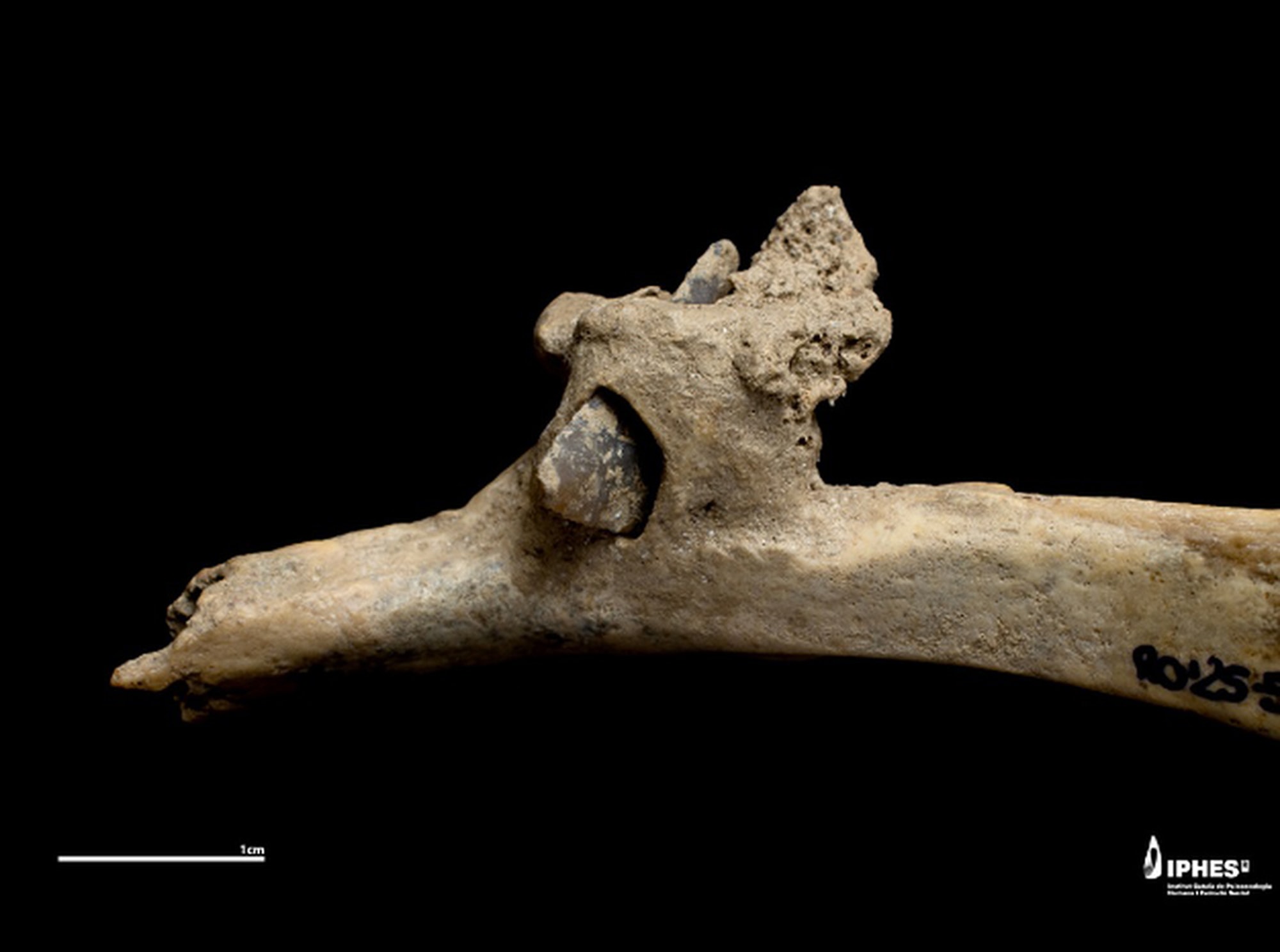A 4,000-year-old skeleton from an ancient Bronze Age shepherd has been unearthed with an arrowhead still buried in one of his ribs.
The discovery, in a prehistoric mountain graveyard in the Spanish Pyrenees, shows that the victim had been hit in the back by a single arrow.
But scientific forensic examination shows that the arrow did not kill its target.
New bone growth around the arrowhead's point, say the discovery team, shows the shepherd probably survived for years with it embedded in his ribs.
An archaeology team from the Catalan Institute for Human Palaeoecology and Social Evolution revealed the find at the Roc de les Orenetes tomb in a statement on 8th July.

Picture shows flint arrowhead stuck in a human rib, located at the Roc de les Orenetes site (Queralbs, Ripolles), Spain. Note: Photo from press section. (Maria D. Guillen/IPHES-CERCA/Newsflash/NX)
They explained: "The projectile, fired from behind and still embedded in the bone, also shows signs of bone regeneration, indicating that the individual survived for some time after the impact.
"This discovery took place during the latest excavation campaign at this high-mountain collective tomb."
Scientists now plan to use a series of CSI-style police lab techniques to crack the mystery of the amazing survival.
Research head Dr Miguel Angel Moreno, an ancient bone expert from Scotland's University of Edinburgh, explained: "The trajectory indicates that the shot was fired from behind.
"The point became embedded, and the bone began to regenerate around it.

Picture shows archaeological excavation works during this month of June at the Roc de les Orenetes site (Queralbs, Ripolles), Spain. Note: Photo from press section. (IPHES-CERCA/Newsflash/NX)
"Now we can study the force of the impact, the type of weapon used, and the position of the attacker and the victim."
And prehistory expert Professor Carlos Tornero from the Autonomous University of Barcelona added: "Considering the position and trajectory of the arrow, it could have killed the person at two moments.
"Either at the moment of impact, due to bleeding or lung damage (for example, a pneumothorax), or shortly afterward, due to infection."
He added: "If the impact was clean and the arrow remained encapsulated between the ribs, and the infection subsided, the person could have survived, and the arrow could not have been the true cause of death.
"This type of detail will now be addressed in the detailed studies we are going to conduct.”
The rib and arrowhead are currently being examined through X-ray microtomography at the National Centre for Research on Human Evolution in Burgos, Spain.
It will later be sent to labs in the USA for more specialised studies, reports local media.
Scientists have been slowly revealing the secrets of the extraordinary mass tomb since they began excavating it in 2019.
The institute explained: "The prehistoric tomb of Roc de les Orenetes, at an altitude of over 1,800 metres, preserves direct and exceptional evidence of interpersonal conflict among the first shepherd communities of the Pyrenees.
"The Roc de les Orenetes is no ordinary tomb.
"For two or three centuries, more than 4,000 years ago, this high mountain cavity housed the remains of more than 60 individuals, probably belonging to a single community."
They added: "To date, more than 6,000 human skeletal remains have been recovered.
"The analysis of these remains reveals a population composed primarily of adult men, but also of women and children.
"The osteological study suggests a community well adapted to the demands of the Pyrenean environment.
"Robust skeletons, marked muscle insertions, and signs of intense physical activity.
"All of this suggests a demanding lifestyle, linked to grazing and the exploitation of high-altitude resources.
"The ties between individuals and with the territory were close, as evidenced by the cave's choice as a burial site for generations."
(Joseph Golder / newsX)


